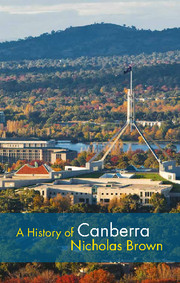6 - Quiet revolution
Published online by Cambridge University Press: 05 July 2014
Summary
IT NEEDS BRAINS
‘If you want to see the Australian ruling class’, Frank Clune advises in a travelogue of 1964, ‘go to Canberra’ – the ‘air of life there is superannuation’. Wry views of the capital were not new, but Clune hinted at a fresh attitude. The city could be teased with grudging respect, but no longer ridiculed as irrelevant. ‘There is a dairying industry in Canberra’, he quipped: ‘milking the taxpayers. It needs brains to keep those poor cows contented’. While resentful of the ‘honey-pot’ of the Commonwealth Treasury, Clune was ‘thunderstruck’ by the ‘figure-juggling juggernaut’ of the new computing system at the Bureau of Census and Statistics, where trends in Australia’s growth were rendered intelligible in seconds. This was useful knowledge. Donald Horne might have regarded Canberra as a place of ‘exile’ in The Lucky Country, also published in 1964: an ‘administrative garrison’ – but his eye was on the businessmen who were failing to make the most of prosperity. Canberra’s function was different, narrower, but in that range showing signs at last of a self-perpetuating pattern. ‘Nothing is vulgar here; everything is genteel’, Clune jibed. But even in these attributes Canberra did not belong to its residents: ‘it belongs to the nation’.
By 1964, Canberra’s experiment had passed from a test of viability to trialling forms of living from which all Australians might learn. The National Capital Development Commission (NCDC) judged not only that the surges and stumbles of the city’s past were over, but also that a steady state of expansion at 9 per cent a year would push beyond old targets: to 250 000 people in 15 years; perhaps 500 000 by 1990. A formula of ‘coherent growth’ was in place, expressed in a sequence of ‘new town’ developments that would ensure all who were drawn into its dynamic gained what Australian cities had so far failed to deliver: simultaneous progress in the assets of urbanity and the amenity of suburbs.
- Type
- Chapter
- Information
- A History of Canberra , pp. 159 - 191Publisher: Cambridge University PressPrint publication year: 2014



